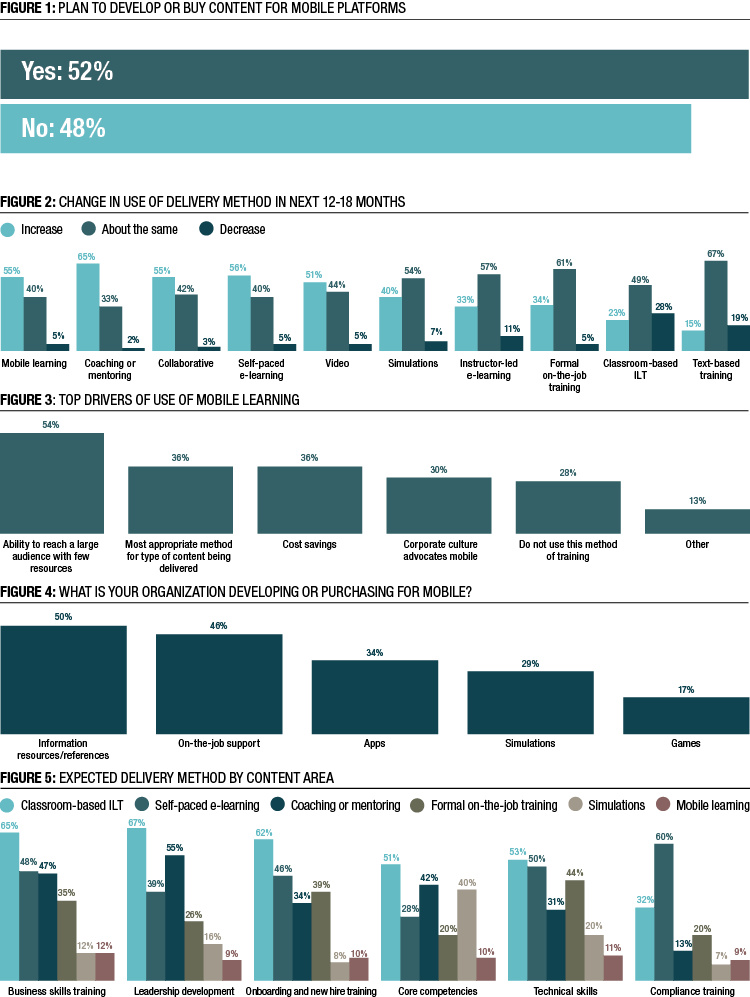Mobile learning continues to make inroads into learning investment and delivery.
by Mike Prokopeak
November 26, 2018
Sometime in the last year, we crossed the mobile Rubicon.
The learning industry reached the tipping point when it comes to the use of mobile platforms and approaches for employee learning. It’s unlikely we will ever go back.
According to a survey of the Chief Learning Officer Business Intelligence Board, a majority of CLOs (Figure 1) now expect to invest in content for mobile learning. While this is only a slight uptick year over year (from 49 percent in 2017 to 52 percent in 2018), it is nonetheless symbolic of the yearslong trend in corporate learning.
The Chief Learning Officer Business Intelligence Board is a group of 1,500 professionals in the learning and development industry who have agreed to be surveyed by the Human Capital Media Advisory Group, the research and advisory arm of Chief Learning Officer magazine. This survey was conducted in June 2018.
The trend is evident beyond just the intent to invest in content that can be delivered via mobile devices. A majority of survey respondents also report they plan to increase their use of mobile learning as a delivery method in the next year (Figure 2).
According to survey respondents, 55 percent of organizations plan to increase their use of mobile learning. Mobile ranked in the top four, just behind coaching and mentoring and self-paced e-learning as the learning delivery most likely to see increased use in the coming year.
The data from prior years of research show the slow fulfillment of mobile learning’s promise. In 2014, CLOs reported that only 12 percent of e-learning was delivered to mobile devices. Now that’s up to 76 percent. The reasons for that growth are scale and efficiency. More than half (54 percent) of CLOs report a major driver of mobile learning is its ability to reach a large audience with few resources (Figure 3). The second biggest driver (36 percent) is a close cousin to the first, cost savings.
While the ability to reach many people efficiently and cheaply is a powerful investment incentive, that belies the utility of mobile learning for purposes beyond simply expanding learning organizations’ reach.
That becomes clear when examining what organizations are developing or buying off the shelf for mobile platforms. As development becomes more driven by enabling learning in the flow of work, as analysts have argued, mobile learning is a significant tool.
According to survey respondents, half of organizations are investing in information resources or references followed closely by on-the-job support content and tools (Figure 4).
Apps, simulations and gaming follow behind, indicating that there remains room for experimentation and innovation in the use of mobile learning as an educational tool.
What are CLOs planning to use mobile learning for? Mobile learning is making inroads into a range of content areas from soft skills like leadership to hard technical skills (Figure 5). The fact that no particular core area is dominating mobile learning indicates that learning organizations are experimenting in many areas to determine how best to use this relatively new and rapidly changing modality.
The future of learning is here but the course is still being set.





